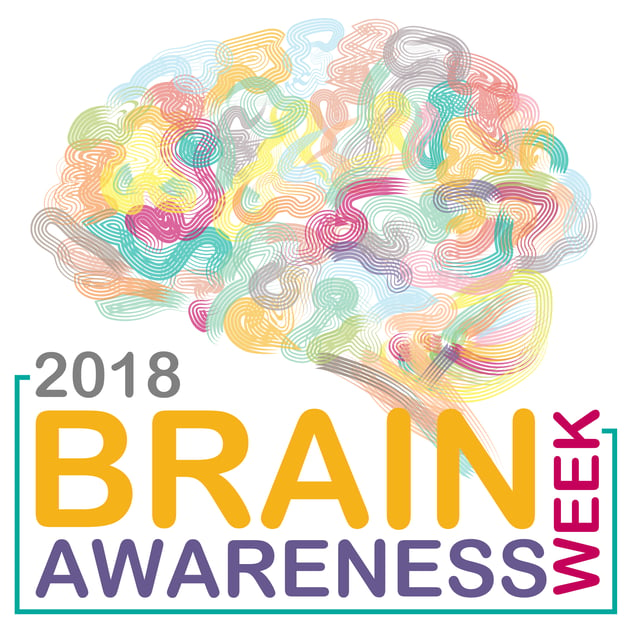 This year, March 12–18 is Brain Awareness Week, a global celebration of the brain and the promise of brain research. To help expand your brain awareness, we’ll discuss how computed tomography (CT) and magnetic resonance imaging (MRI) are used to create medically useful images of the brain and surrounding structures.
This year, March 12–18 is Brain Awareness Week, a global celebration of the brain and the promise of brain research. To help expand your brain awareness, we’ll discuss how computed tomography (CT) and magnetic resonance imaging (MRI) are used to create medically useful images of the brain and surrounding structures.
MRI
MRI is currently able to produce the clearest, most detailed images of the brain and head. It does so using a powerful magnet, which causes the water molecules in the body to align in a way that the machine can read and turn into precise three-dimensional images. MRI is a useful tool in diagnosing and assessing a wide variety of brain conditions, including
- Stroke
- Aneurism
- Epilepsy
- Infection
- Tumor
- Pituitary gland disorders
- Hydrocephalus
- Some chronic conditions (such as Alzheimer’s and multiple sclerosis)
- Developmental abnormalities
Because of the clarity and detail possible in MR images, it is valuable for identifying tumors, stroke, and other progressive conditions at the earliest possible stages.
In addition to unsurpassed image quality, MRI provides several benefits over other types of imaging. It does not require the use of ionizing radiation, exposure to which is associated with an increased risk of cancer. For patients whose exams require the use of contrast material, that used with MRI (gadolinium) is less likely to cause an allergic reaction than the iodine-based contrast used for CT scanning.
Limitations of MRI
While MRI is the imaging method of choice in many cases, it has limitations. MRI scanning requires the patient to remain still for extended periods of time. This can be especially challenging for some people, including children, people who are in pain, and those who experience claustrophobia or intense anxiety during imaging. In such cases, a sedative may be prescribed to enable the patient to undergo the exam.
Additionally, MRI is contraindicated for some patients, including those with certain implanted medical devices or embedded metal such as shrapnel. The powerful magnet used in MRI strongly attracts ferromagnetic objects, making it vitally important to follow strict protocols to exclude metals from the exam room that may pose a hazard. If the exam requires contrast, the patient must undergo a kidney function test. Used in patients with poor kidney function, gadolinium poses a risk of nephrogenic systemic fibrosis, a rare complication.
CT
CT scanning is capable of quickly producing three-dimensional images that are far more detailed than conventional X-rays. This is especially valuable in emergency situations that require brain imaging, such as a head trauma or a suspected stroke or aneurysm. CT is often used to assess conditions of the brain such as
- Bleeding
- Skull fracture
- Blood clot
- Tumor
- Stroke or aneurysm
Additionally, CT is used to accurately guide brain biopsies and to plan for radiation treatments.
Because CT involves considerably shorter scan times and is less sensitive to movement, patients who struggle to complete an MRI often can successfully undergo CT scanning. Additionally, patients who are excluded from MRI due to implanted medical devices or embedded shrapnel can typically undergo CT safely. Finally, CT costs less than MRI, making it more accessible to more patients.
Limitations of CT
CT provides less detailed images of soft tissues such as the brain than MRI. Because the procedure uses ionizing X-rays, CT scans will only be ordered if the referring doctor believes the benefit of the scan outweighs the small increased cancer risk associated with the scan. The radiation dose delivered in a CT scan of the head is approximately equal to what the average person would absorb through the natural environment (from sources such as sunlight and radon) over a period of 8–16 months. Children are especially sensitive to the effects of radiation, however, so doctors should take extra care in recommending CT scanning for a child.
Iowa Radiology offers both CT and MRI at our locations in Clive and Ankeny as well as CT at our downtown Des Moines clinic. We want you to have the resources you need to make fully informed decisions about your health care. Click the link below to subscribe to our blog and get regular articles delivered to your inbox.
Sources
"Computed Tomography (CT)—Head." Radiologyinfo.org. Radiological Society of North America, 8 June 2016. Accessed 20 Feb 2019.
"Magnetic Resonance Imaging (MRI)—Head." Radiologyinfo.org. Radiological Society of North America. Accessed 20 Feb 2018.
"Radiation Dose in X-Ray and CT Exams." Radiologyinfo.org. Radiological Society of North America, 8 Feb 2017. Accessed 20 Feb 2018.
The information contained in the Iowa Radiology website is presented as public service information only. It is not intended to be nor is it a substitute for professional medical advice. You should always seek the advice of your physician or other qualified healthcare provider if you think you may have a medical problem before starting any new treatment, or if you have any questions regarding your medical condition.
Iowa Radiology occasionally supplies links to other web sites as a service to its readers and is not in any way responsible for information provided by other organizations.


